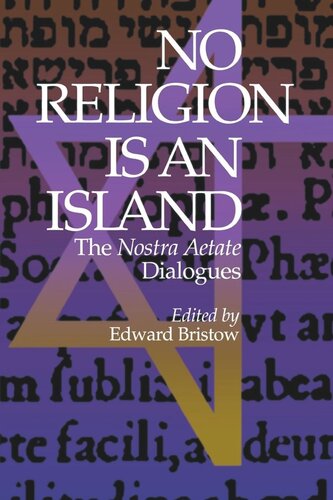

Most ebook files are in PDF format, so you can easily read them using various software such as Foxit Reader or directly on the Google Chrome browser.
Some ebook files are released by publishers in other formats such as .awz, .mobi, .epub, .fb2, etc. You may need to install specific software to read these formats on mobile/PC, such as Calibre.
Please read the tutorial at this link: https://ebookbell.com/faq
We offer FREE conversion to the popular formats you request; however, this may take some time. Therefore, right after payment, please email us, and we will try to provide the service as quickly as possible.
For some exceptional file formats or broken links (if any), please refrain from opening any disputes. Instead, email us first, and we will try to assist within a maximum of 6 hours.
EbookBell Team

4.0
46 reviewsThese dialogues began in 1993 as an outgrowth of a 1990 conference on Catholic-Jewish relations that commemorated the 25th anniversary of Nostra Aetate, the Vatican II document encouraging dialogue between the Catholic church and non-Christian religions. This volume contains a record of the first five Nostra Aetate dialogues, and it brings together an impressive array of Jewish and Catholic scholars. The conversations here take up "the Jewishness of Jesus" (John Meier and Shaye Cohen); "the Death of Jesus" (the late Raymond Brown and Michael Cook); "Catholic-Jewish Dialogue and the New Millennium" (Ismar Schorsch and John Cardinal O'Connor); "Jerusalem in Jewish and early Christian Thought" (Robert Wilkins and Michael Fishbane); and Abraham Joshua Heschel as "prophet of social activism" (Eugene Borowitz and Daniel Berrigan). Moderators and respondents include religion journalist Peter Steinfels, Rabbi Burton Visotzky and Susannah Heschel, Abraham Joshua Heschel's daughter. The volume is a solid introduction to some of the most important historical work on Christian origins, Jewish-Christian relations and the historical Jesus. The discussion of contemporary issues, especially between Brown and Cook and between Heschel and Berrigan, is lively and accessible. This collection serves as a model for interreligious dialogue.